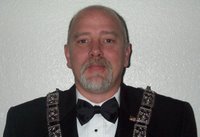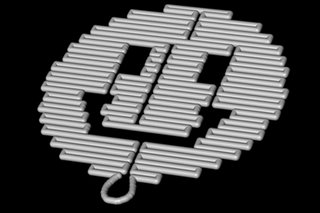In 1982 Director Ridley Scott turned this novel into the film “Blade Runner”, (arguably) one of the best Sci-Fi movies ever made. In Scott’s interpretation of the novel he takes the concept of commonplace genetic and nano-scale engineering a little further, by suggesting that these technologies will become so cheap and easy that virtually anyone will be able to create their own eyes, pets, servants or living oddities in little back alley stores.
Intense science turned into “fun art form”.
Imagine a world where the high school dropout ass-crack plumber down the street can create new life forms and nano-bots in his basement with nothing more than a 9th grade chemistry book and a $129.00 science kit from Radio Shack.
I have never been the kind of person to fear new technologies, or always think of the “worst case scenario” when some new break through or innovation comes along. I have always believed (for the most part) that the scientific community does a pretty good job of questioning and policing itself.
But, could these amazing technologies eventually become available to the masses?
If so, can we control what they might used for?
Have A Nice Day!
Actual Images of Nano Structures created with long strands of DNA and a new "cheap & easy" process.
Actual Images of Nano Structures created with long strands of DNA and a new "cheap & easy" process.
Today I ran across this article on MIT’s Technology Review website;
Do-It-Yourself Nanotech by Kevin Bullis......
Paul Rothemund, a computer scientist at Caltech, with a background in biology, has developed a relatively inexpensive way to quickly design and build arbitrary shapes and patterns using DNA -- and, he says, it's simple enough for high-school students to use.
"It's really spectacular work. I'm extremely excited about it," says William Shih, professor of biological chemistry and molecular pharmacology at Harvard Medical School, who is now working to extend Rothemund's technique to building three-dimensional structures. Rothemund's work, he says, has taken the small field of DNA nanotechnology and "opened it up to becoming a mainstream tool by making it one or two orders of magnitude cheaper and easier to do."
Now, I understand the incredible opportunities here for education and innovation. But, I really have mixed feelings about this stuff, could we be (in some way) casually jogging into the worlds depicted in Dick’s novel or Scott’s (somewhat darker) film?
Just wonderin
A. Weasel
Up Date;
Oh, and I forgot to mention,
"Designing each structure took about a week, according to Rothemund. After that, trillions of copies self-assemble in just a few hours -- this speed of production is one of the qualities that makes self-assembly so attractive."
Cool, they're self-replicating........ just like us.
I know...I know…They don’t actually reproduce, they assemble themselves.
A. Weasel



No comments:
Post a Comment